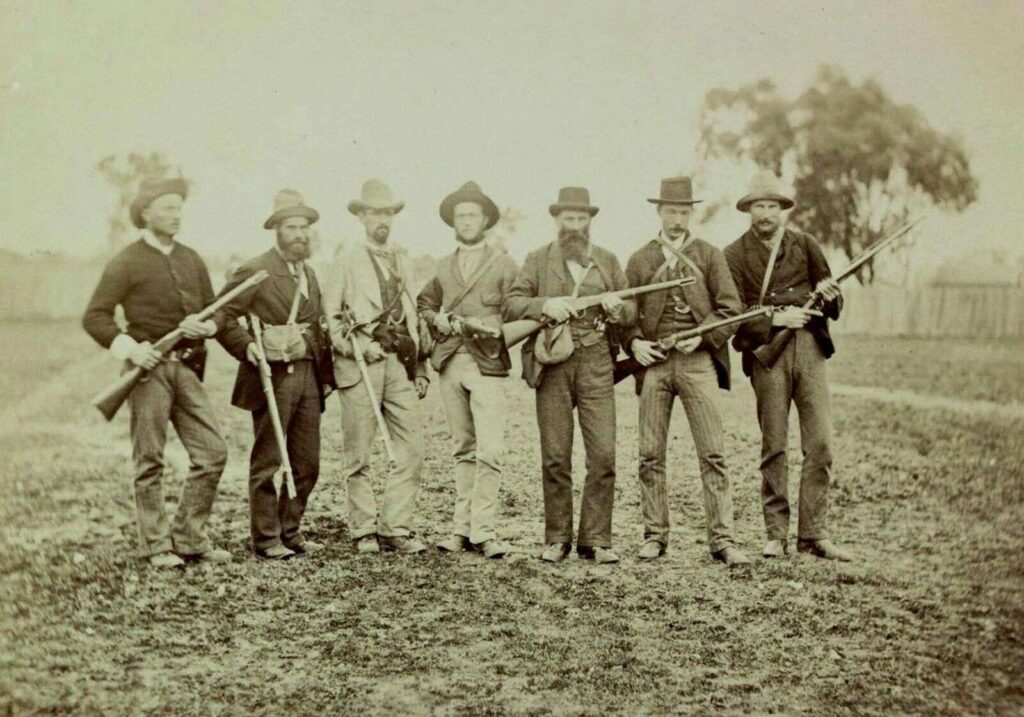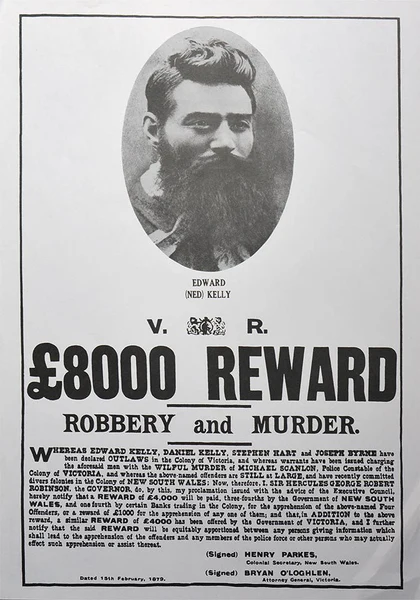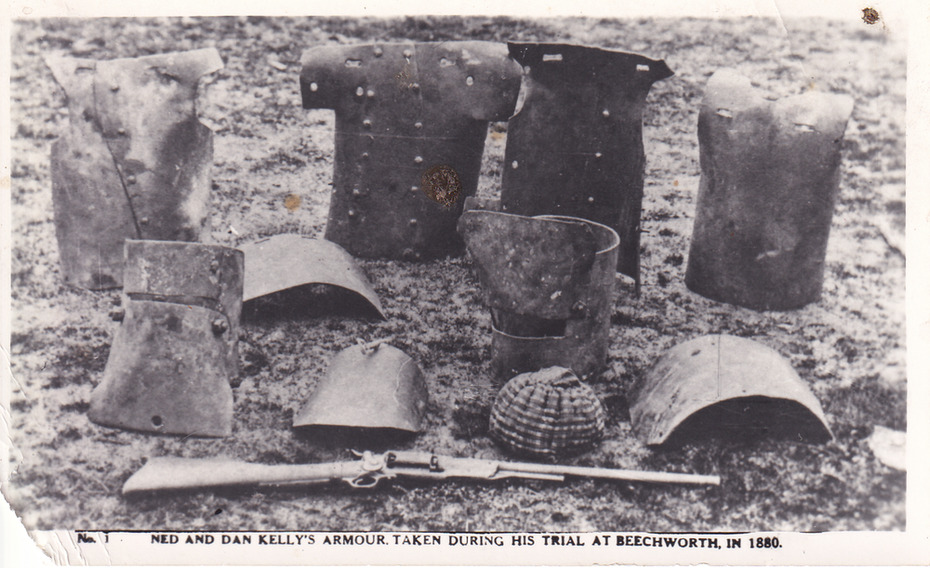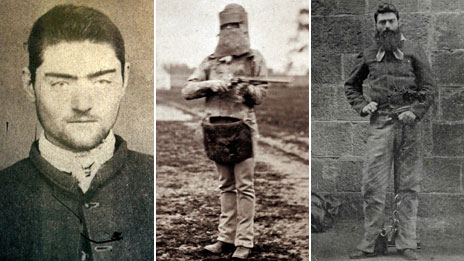Irrespective of whether one sees him as a legend or outlaw, glorifies or vilifies him, there is no doubt that Edward (Ned) Kelly was the most notorious of all the bushrangers and has become a true Australian icon.
Kelly and his gang; Dan Kelly, Steve Hart, Joe Byrne, were fugitives in the late 1870s in colonial Victoria with the ambition of bringing justice to the poverty-stricken underclass, who, as Kelly claimed, were constantly harassed by the “tyrannical conduct of the police”.
The Making of the Gang
The infamy of the Kelly gang began with what is known as the ‘Fitzpatrick Affair’. On 15th of April 1878, Constable Fitzpatrick attempted to arrest Dan Kelly, Ned’s younger brother, on a charge of horse theft. However, what began as a simple arrest, escalated quickly, with Fitzpatrick claiming Ned Kelly shot him with the intent to murder.
However, several versions of the Fitzpatrick Affair events have been recorded. Kelly, for one, claimed he was six hundred kilometres away from home during the event. Kelly’s mother, who was present, then also claimed that Fitzpatrick attempted to molest her fourteen-year-old daughter, Kate.
Shortly after the event, the police returned to the Kelly household, in order to arrest Kelly’s mother and two others on the counts of attempted murder. They were subsequently sentenced to three years’ imprisonment. Kelly and his brother Dan, wanting to avoid arrest and imprisonment, quickly fled.

A Greater Cause
Initially, Kelly’s aim was to “raise money for the legal defence of Mrs Kelly and the others”, however, the situation provided an opportunity to not only take a stand for his mother, but, for all who had been unfairly treated by the police force.
The Victorian Police Force conducted a large-scale man-hunt, for Kelly and his gang, who were hidden in the vast bushland of Victoria and New South Wales, now famously known as Kelly Country, a mountainous territory measuring roughly 1,600 square miles between the townships of Mansfield, Benalla and, Beechworth.
The Most Wanted Criminals
The ‘Stringybark Creek Incident’ soon followed on 25th of October, when Sergeant Kennedy and Constables Scanlon, Lonigan and McIntyre were sent to apprehend Kelly and his gang. The search party’s whereabouts were discovered by the gang, leading to all but McIntyre being shot dead by Ned Kelly. The murders at Stringybark Creek resulted in the gang being officially outlawed by the Victorian government.
While continuing to be pursued by the police, the gang managed to complete two bank robberies at Euroa on the 9th of December 1878 and, Jerilderie, on the 8th of February, 1879. The Kelly gang’s bank robberies were not for personal gain, instead distributing stolen funds to those in the community that need it most, earning Kelly comparisons to the legendary Robin Hood – with historian Ian Jones declaring him “perhaps the only real Robin Hood who has ever lived.”
By February, Kelly and his gang were the most wanted criminals in Australia with an £8,000 reward out for their capture, dead or alive, which to this day, is the largest ever bushranging reward.

The Capture
Ned Kelly was finally captured at Glenrowan, in June of 1880, after a shootout between the gang and the police in which Kelly famously wore a suit made of steel armour. Dan Kelly and Steve Hart were placed under arrest, Joe Byrne was killed and Ned Kelly was on the verge of death with several gunshot wounds. Kelly’s trial, before Justice Sir Redmond Barry, found him guilty on the charge of murdering Constable Lonigan and he was sentenced to death. He was executed on the 11th of November of the same year.

Police Corruption
During and, in fact, preceding the time of the Kelly gang’s outbreak, the Victorian Police, led by Chief Commissioner Frederick Standish (1858-1880), was known to be inefficient and corrupt. The Kelly gang brought to light incidents of corruption, misconduct and inadequate management within the police force.
The extent to which Kelly and his gang contributed to the exposure of police corruption and misconduct has been examined and debated by a number of Australian historians. Ian Jones, arguably the most distinguished Ned Kelly historian, is an Australian writer, journalist and, director. Jones, along with historians, have all provided sympathetic readings, attributing Kelly’s unlawful actions to the misconduct of the police.
The Royal Commission Investigation
Following Kelly’s execution, on the 7th of March, 1881, the Victorian Governor, Lord Normanby, signed an order for a Royal Commission to “enquire into the circumstances preceding and attending the Kelly outbreak as well as report upon the present state of organisation of the police force”
Fitzpatrick was criticised for being an unsympathetic character in the police force, with the Royal Commission concluding that, “his conduct, however justified by the ruler of the service, was unfortunate in its results”. Many of the sergeants and constables directly involved with the Kelly gang were investigated and most were either reprimanded, demoted, suspended or dismissed.
Ultimately, the Royal Commission confirmed the presence of significant misconduct and corruption within the Victorian Police Force and thus, vindicating Ned Kelly’s declarations; “there never was such a thing as justice”.

To this day, Ned Kelly is a significant figure in Australian history, with some even going as far as to say he helped create the ‘Australian spirit’ by defining “what it means to be Australian” with sayings such as ‘to be as game as Kelly’.




Leave a Reply